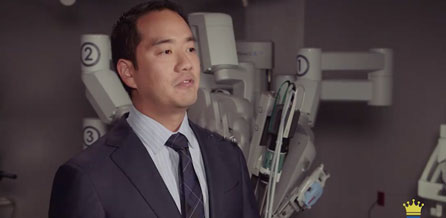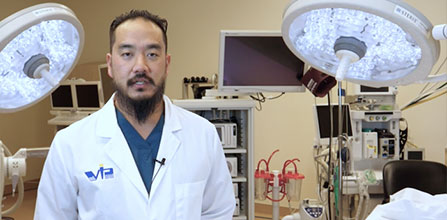LINX Reflux Management System
The LINX Reflux Management System is a small bracelet-like medical device composed of titanium beads and a magnetic clasp about the diameter of a quarter. During surgery, the titanium beads are placed around the lower part of the esophagus at the Lower Esophageal Sphincter. The magnetic clasp is then closed and the patient returns to normal life. The entire procedure requires about 15 to 20 minutes of operative time and is performed in an outpatient setting in a minimally invasive manner.
The magnetic properties of the clasp allow the device to stretch and open when food is consumed. Once the food has passed through the LINX device, the magnet contracts, and the pressure on the LES is resumed.
After surgery, patients may have some difficulty swallowing. This is normal and will improve in the days and weeks after surgery. To minimize swallowing issues, patients should chew food thoroughly, take small sips of water between bites, and minimize consumption of breads, pastas and dense meats.
Benefits of LINX
- The LINX device has shown excellent results in reducing or eliminating the symptoms associated with GERD in qualifying patients. Because of the simplicity of the procedure, most patients are back to their normal lives very quickly and feel the effects of the procedure almost immediately. Up to 85% of patients were able to eliminate their daily PPI usage and 88% of patients reported of the elimination of bothersome heartburn symptoms at five years, according to company data.
- One of the most appealing aspects of LINX is that it is reversible if need be. (Although we certainly don’t expect to remove it). Recent data has shown that even if the device is removed for any reason in the future, the scar tissue created by its implantation offers some lasting pressure on the Lower Esophageal Sphincter and most patients continue to enjoy some benefits.
- The patient is, by necessity, on a regular diet from postoperative day 0, as opposed to a Nissen patient who is on a modified liquid diet for a month after surgery.
- Unlike the Nissen Fundoplication, patients are more able to belch and vomit in cases of need and experience less bloating and trapped gas.
Risks and Considerations of LINX
- The downside to the LINX is that there are very specific criteria for those who would benefit, as determined by the patient’s preoperative pH monitoring and manometry testing. Patients with larger hiatal hernias will be considered on a case-by-case basis.
- We do not know the safety or efficacy of the LINX device in patients with Barrett’s Esophagus, severe esophagitis, other implanted medical devices, and more.
- Further, because this is a medical device, there is a small chance of device failure which includes slipping, also known as migration, or the routing into the esophagus. Either of these complications requires a revisional surgical procedure.
Anyone who doesn’t qualify for LINX will usually be a candidate for a fundoplication. Talk to Dr. Heidi Ryan or Dr. Shawn Tsuda about which surgery will work for you.



